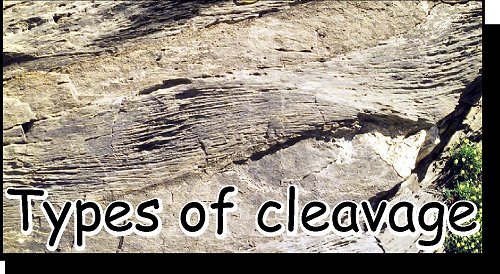
|
|
Cleavage is a new fabric the develops in rocks during deformation. There are
several ways in which cleavage can form. Probably the most famous type is "slatey
cleavage" - so called because it is characteristic of slates. In slates
the cleavage can come to dominate the rock so that you have to look really hard
to find features like bedding. In these situations the cleavage is said to be
"penetrative". Slatey cleavage results from the mechanical realignment or growth
of platey minerals such as clays and micas, essentially so that they are flattened
perpendicular to the direction of maximum compression. In folded sequence slatey
cleavage is commonly found to be parallel to fold axial surfaces (this type
of arrangement is termed "axial planar cleavage" and is useful for determining
vergence. When rock layers with different mechanical properties are interlayered
cleavage is often found to refract through the layers.
Cleavage planes can also form by dissolution of material - although in these
situations it is commonly spaced. This type is called "pressure
solution cleavage".
Return to minor structures menu
